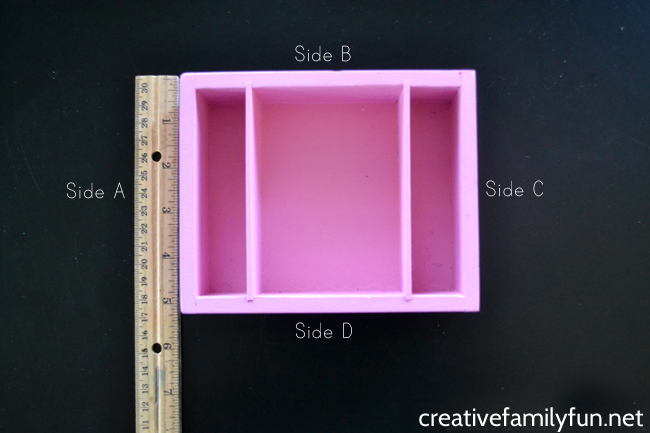Measurement is more than just grabbing a ruler and measuring the length of an object. There’s width, weight, circumference, area, perimeter, and more, so much more.
I love measurement activities because they’re so often hands-on activities, and this idea is no exception.
This perimeter activity is a fun invitation you can quickly set-up so your child can practice measuring and calculating.

So, grab a few items and let’s create a Perimeter Lab.
Disclosure: There are Amazon Affiliate and other affiliate links in this article which means, at no additional cost to you, we could receive compensation for our recommendations. You can read our full disclosure policy on our Disclosure Page for more details.

Table of Contents
Set-up your perimeter activity
Set-up is so easy!
First, you’ll need some measurement tools: a ruler, pencil, and your perimeter lab recording sheet.
Click this link to download your perimeter lab recording sheet.
You’ll also need a variety of things to measure. Choose items of various sizes that are rectangular or square. Look for books, boxes, board or card games. You could also cut pieces of paper into different sized squares or rectangles.

Does your child already know how to find the perimeter or are they just learning?
If they already know, set them loose with this math invitation for a fun way to review perimeter.
They can use the recording sheet to walk through the process and find the perimeter of the different objects that you’ve set out.
But, if they don’t know, you can use the recording sheet to walk them through the process.
How do you find the perimeter of an object?
First, grab the ruler. You’ll want to measure side A, side B, side C, and side D of your rectangular object. (See the picture above for reference.)
After you’ve recorded all the measurements, add all the sides together to find the perimeter of the object.

Variations of this perimeter activity
Since we’re just grabbing random objects to measure, you may want to alter this perimeter activity just a bit to fit with your child’s ability.
Depending on your child’s ability, you may want to have them round their measurements to the nearest inch or half-inch. If they’re comfortable with fractions or decimals, they can use more specific measurements.
If all you want to do is get comfortable with calculating perimeter, then getting exact measurements isn’t necessary.

Check your work.
There’s no answer key to this project. You can pre-measure all the items (if you really want to) to create an answer key. Or, just look over the process and the answers to see if your child is correctly figuring perimeter. You can also have your child double-check their work.
Correct answers are important in math, but so is learning the process. Know the process first and then focus on finding the correct measurement later.
A Perimeter Lab is a fun way to learn the process behind calculating perimeter. You’re doing real-life measurements and not just looking at a drawing on a piece of paper. It’s fun, it’s hands-on, and it’s a great way to extend learning at home.

You may also like one of these math activities:
Architecture STEM: Area and Perimeter City at Teach Beside Me
Fun hands-on math resources
When we practice math at home, we love to play games. These games are so much fun and a great hands-on activity. Plus, it’s a great way to combine a family activity with learning. Check out some of these awesome math games below:
Are you looking for more kids activities?
Join our fun Facebook community, Creative Family Fun for Busy Families, for daily activities that are great for kids and families. We’ll chat, share, and have fun. It’s a safe and private place to share ideas for family and kids activities.
I’d love for you to join me! Just click the link below, request to join, and answer the questions (they’re easy, I promise). Come join the fun! Join the Creative Family Fun for Busy Families community here.
Latest posts by Terri Thompson (see all)
- Cardboard Tube Turkey Craft - October 30, 2023
- Simple and Fun Shape Crafts for Toddlers - October 25, 2023
- Thanksgiving Math Activities for Kids - November 10, 2022